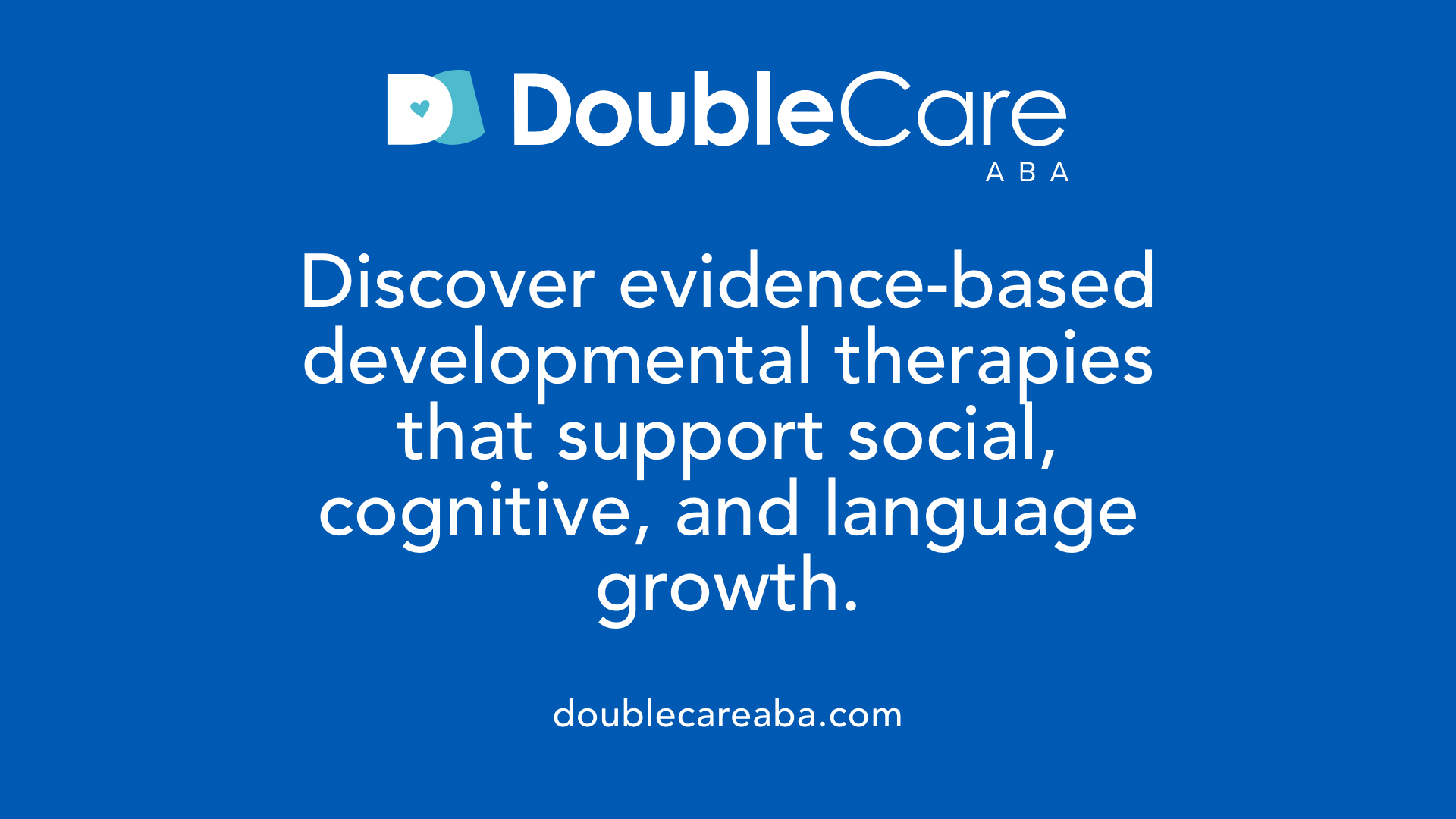Understanding Autism Therapies: An Essential Guide
Autism spectrum disorder (ASD) encompasses a wide range of developmental conditions that affect communication, social skills, and behavior. With no single treatment fitting all, understanding the various therapy options is crucial for tailoring effective interventions. This article explores the main types of therapies used to support individuals with ASD, their purposes, benefits, and how they contribute to improving quality of life.
Behavioral Therapies and their Focus Areas

What are the main types of therapies used to treat autism?
Main therapies for autism focus on enhancing skills and reducing difficulties through structured approaches. Behavioral therapies such as Applied Behavior Analysis (ABA) are widely supported by research and involve teaching desired behaviors through reinforcement strategies. Pivotal Response Treatment (PRT) emphasizes setting the stage for spontaneous social communication by targeting pivotal behaviors like motivation, while TEACCH provides structured educational environments that adapt routines and visual supports to meet individual needs.
How do behavioral therapies like ABA help children with autism?
ABA is an intensive approach that uses positive reinforcement to encourage good behavior and skill development. It breaks down complex skills into small, manageable tasks and rewards progress, which aids children in improving communication, social skills, and daily living activities. Tailored to each child's unique profile, ABA involves continuous measurement of progress, making it highly effective for guiding behavioral improvements.
Focus Areas of Selected Therapies
| Therapy | Main Focus | Techniques Used | Targeted Skills |
|---|---|---|---|
| ABA | Skill development and behavior management | Reinforcement, Discrete Trial Training | Communication, social skills, independence |
| PRT | Motivating social engagement | Play-based activities, pivotal behavior targeting | Initiating interaction, responding, learning in natural environments |
| TEACCH | Structured learning environments | Visual supports, routines, physical layout adaptation | Adapted learning, sensory regulation, daily life skills |
These therapies collectively help children with autism build foundational skills for better social integration and independence, emphasizing the individual's specific needs. Treatment plans are often multidisciplinary, combining behavioral, developmental, and educational methods to achieve optimal results.
Developmental and Educational Approaches

What is the purpose of autism therapies and how do they support development?
Autism therapies are designed to help individuals with autism develop essential skills that improve their ability to communicate, interact socially, and perform daily activities independently. These approaches also aim to reduce challenging behaviors and promote overall well-being.
Developmental therapies such as speech-language therapy and models like the Early Start Denver Model (ESDM) utilize play-based and natural routines to foster growth in social, cognitive, and language skills. For example, speech therapy helps individuals articulate words, understand language, and use communication tools effectively. ESDM combines behavioral techniques with a focus on engaging children in meaningful play, enhancing social interactions and cognitive development.
Another prominent approach is TEACCH, which creates highly structured environments tailored to the child's abilities and sensory preferences. This helps children learn in a consistent, predictable manner, improving learning outcomes and reducing anxiety.
What are some evidence-based treatment options for autism?
Numerous studies support the effectiveness of certain autism therapies. Applied Behavior Analysis (ABA) remains the most well-established treatment, helping develop desirable behaviors and teach new skills through positive reinforcement. The Early Start Denver Model (ESDM) is an early intervention that overlaps with ABA principles but emphasizes naturalistic learning through play.
Speech-language therapy is also supported by research, especially for enhancing communication and language development. Occupational therapy helps improve daily living skills and sensory integration, making everyday tasks more manageable. Structured educational programs like TEACCH employ visual supports and routines, making learning more accessible.
These evidence-based approaches have demonstrated success in improving core symptoms of autism, such as communication difficulties and social challenges, especially when started early.
| Therapy Type | Focus Area | Supporting Evidence | Typical Age Range |
|---|---|---|---|
| ABA | Behavior and skill development | Strong scientific data supports effectiveness | All ages, especially early childhood |
| ESDM | Social, cognitive, language skills | Proven benefits in early intervention | 1-4 years |
| Speech Therapy | Verbal and non-verbal communication | Widely supported by research | All ages |
| TEACCH | Structured learning environment | Demonstrated to improve learning outcomes | School-aged children |
| Occupational Therapy | Daily living and sensory integration | Supported for improving functional skills | All ages |
Understanding these approaches can help families select interventions that best suit their child's needs, fostering meaningful progress.
Social-Relational and Psychological Therapies
Are psychological therapies like CBT or DBT suitable for autism?
Psychological approaches such as Cognitive-Behavioral Therapy (CBT) and Dialectical Behavior Therapy (DBT) can be very helpful for autistic individuals. These therapies are often tailored to meet the unique needs of each person, with adaptations like visual supports, social stories, and structured routines. CBT helps manage anxiety, obsessive behaviors, and emotional regulation by teaching coping skills and modifying negative thought patterns. It is especially effective for higher-functioning individuals or those who can understand and work with cognitive strategies. DBT, a form of therapy focusing more on emotion regulation, mindfulness, and acceptance, is useful for managing intense emotions and reducing problematic behaviors. Both therapies support mental health by improving emotional resilience and social interaction skills. However, success depends on individual preferences and capabilities. Therapists experienced with autism customize their approaches to maximize engagement and benefit.
How can families and individuals access autism treatment services?
Accessing autism treatments involves several steps. Families should start by consulting healthcare providers for diagnosis and recommendations. Navigating insurance plans and understanding coverage options is crucial for reducing out-of-pocket costs. Many families also turn to community resources, support groups, and early intervention programs, especially for children under age 3, which offer intensive therapies and support. Telehealth services have expanded access, providing remote therapy sessions that break geographical and mobility barriers. Advocacy organizations can assist in connecting families to available services. Lastly, ongoing collaboration with a multidisciplinary team—comprising speech-language pathologists, occupational therapists, behavioral therapists, and medical professionals—ensures tailored and continuous support for each individual's evolving needs.
Understanding and utilizing these resources can make therapy more accessible, helping individuals with ASD reach their potential and improve their quality of life.
| Therapy Type | Focus Area | Suitable Age | Typical Methods | Evidence Level |
|---|---|---|---|---|
| CBT | Anxiety, Emotional Regulation | All ages | Cognitive restructuring, behavioral techniques | Strong |
| DBT | Emotional regulation, impulsivity | Adolescents, adults | Mindfulness, emotional coping skills | Moderate |
| Social Skills Training | Peer interactions | Children to adults | Role-playing, group activities | Moderate |
| DIR/Floortime | Social-emotional development | Early childhood | Play-based interactions | Evidence growing |
| Speech & Language Therapy | Communication skills | All ages | Speech exercises, augmentative communication | Well-established |
| Occupational Therapy | Daily living, sensory issues | All ages | Sensory integration, motor tasks | Strong |
| Family and Parent Training | Supportive parenting | All ages | Training sessions, home programs | Evidence support |
This comprehensive overview highlights how psychological and social therapies can be integrated into an individualized treatment plan, emphasizing collaboration and accessibility for optimal outcomes.
Supportive and Complementary Therapies

What is occupational therapy and how does it assist individuals with autism?
Occupational therapy (OT) plays an important role in helping individuals with autism develop essential skills needed for everyday life. This therapy focuses on improving daily living activities such as dressing, grooming, feeding, and personal hygiene. It also addresses sensory processing challenges and motor skills, including coordination, strength, and spatial awareness.
By working on these areas, OT helps children and adults increase their independence and participate more fully in social, educational, and community settings. Whether delivered in clinics, schools, or through early intervention programs, occupational therapy is tailored to each person’s unique needs.
Are there specific therapies for adults with autism?
Yes, adults with autism can benefit from a variety of therapies designed to improve their quality of life. Common approaches include cognitive-behavioral therapy (CBT) to manage anxiety, depression, or other mental health issues.
Social skills training and group programs are also valuable for fostering better communication and social relationships. Many adult autism services incorporate specialized programs focused on employment, independent living, and community integration.
These therapies aim to support adults in achieving greater independence, emotional stability, and social connectedness, emphasizing ongoing personal development and adaptation.
Other supportive and complementary therapies
Beyond structured clinical treatments, there are several alternative and complementary approaches that can assist individuals with autism.
| Therapy Type | Description | Potential Benefits |
|---|---|---|
| Music Therapy | Using listening, singing, and instrument playing to enhance emotional expression and social interaction | Improves emotional regulation and communication |
| Animal-assisted Therapies | Involves interacting with trained animals, such as dogs or horses, to promote social skills and reduce anxiety | Increases social engagement and reduces stress |
| Complementary Approaches | Includes dietary modifications, herbs, or sensory-based activities like yoga and relaxation techniques | Some may support well-being, but evidence varies |
While these approaches can be helpful, they are generally most effective when used alongside evidence-based treatments like ABA, speech therapy, or occupational therapy. Families should consult healthcare professionals to select safe, suitable options tailored to individual needs.
Medical and Pharmacological Interventions
 Medications play a supplementary role in autism spectrum disorder (ASD) treatment, primarily aimed at managing co-occurring conditions and symptoms rather than addressing core autism features. Since ASD is a neurodevelopmental condition without a cure, medication use is typically part of a broader, individualized treatment plan.
Medications play a supplementary role in autism spectrum disorder (ASD) treatment, primarily aimed at managing co-occurring conditions and symptoms rather than addressing core autism features. Since ASD is a neurodevelopmental condition without a cure, medication use is typically part of a broader, individualized treatment plan.
Many individuals with autism benefit from medications to control symptoms like irritability, aggression, hyperactivity, anxiety, or seizures. Commonly prescribed drugs include antipsychotics such as Risperidone and Aripiprazole, which have FDA approval for reducing severe disruptive behaviors. Additionally, medications like antidepressants may be used to tackle anxiety and obsessive behaviors.
It is essential that medication use in autism is closely supervised by healthcare professionals. Regular monitoring ensures safety, manages side effects, and evaluates the effectiveness of the treatment. While medications can significantly improve quality of life, they are generally most effective when combined with behavioral, developmental, and supportive therapies.
In managing co-occurring medical conditions, such as gastrointestinal problems, sleep disturbances, or ADHD, medications may be prescribed to address specific health issues that impact overall functioning. For example, sleep aids or gastrointestinal treatments can alleviate discomfort, thereby contributing to better responses in behavioral interventions.
Medication options should always be tailored to the individual’s specific needs and health profile, emphasizing collaboration with healthcare providers. This collaborative approach helps ensure safe use and optimal benefit from treatment.
For families and caregivers, understanding the role of medications and recognizing that they do not cure autism is vital. Effective management involves a comprehensive approach that considers medical, behavioral, and educational therapies, supporting each individual’s unique development and well-being.
More info: Searching “Medication autism treatment” provides additional resources on safe medication practices, latest clinical trials, and emerging pharmaceutical options.
Tailoring and Accessing Autism Therapies
Is there a generally recommended treatment for autism?
While no single treatment is universally endorsed for autism spectrum disorder (ASD), early detection and intervention are widely recognized as the most effective approach. Implementing personalized therapy plans that may include applied behavior analysis (ABA), speech therapy, occupational therapy, and social skills groups can significantly improve long-term outcomes.
Tailoring interventions to meet the unique needs of each individual ensures that therapies are relevant and effective. For example, some children benefit most from behavioral strategies, while others may need support with sensory processing or communication. Regular assessment and adjustments help maximize benefits.
How can families and individuals access autism treatment services?
Accessing autism services involves coordination with healthcare providers, navigating insurance coverage, and making use of available community and government programs. Early intervention is crucial, so families are encouraged to seek evaluations as early as possible.
Many families turn to resources like Medicaid, state-funded programs, and non-profit organizations that provide therapy services at reduced or no cost. Schools often offer specialized programs tailored for children with ASD, including inclusive classrooms and speech or occupational therapy.
Ongoing support also requires regular monitoring of progress. Collaborative efforts among therapists, educators, and families ensure that each child’s development is supported effectively.
Resources for autism service access
| Resource Type | Description | Examples |
|---|---|---|
| Medical insurance | Coverage can include therapy sessions, medications, and evaluations | Private insurance, Medicaid |
| Government programs | Provide funding and support for early intervention and special education | IDEA, state disability programs |
| Community organizations | Offer therapy, counseling, and family support groups | Autism Speaks, local non-profits |
| Professional assessments | Help determine individual needs and tailor treatment plans | Licensed psychologists and therapists |
Efficiently accessing these resources involves understanding eligibility, applying early, and maintaining consistent communication with care teams. Prioritizing early intervention and continuous assessment significantly enhances therapy outcomes.
Empowering Through Choice and Knowledge
Understanding the diverse autism therapy landscape enables families, caregivers, and individuals to make informed decisions tailored to specific needs. Early and personalized intervention is key to unlocking better developmental outcomes, enhancing independence, and improving quality of life. Continued research and advocacy are vital in expanding access and refining therapeutic approaches to support all individuals on the spectrum.
References
- Autism Therapy Types & Interventions - Cleveland Clinic
- What are the treatments for autism? | NICHD
- Autism therapy and intervention
- Treatment and Intervention for Autism Spectrum Disorder - CDC
- Types of Therapy for Autism: 5 Options for Autistic Kids | USAHS
- Autism spectrum disorder - Diagnosis and treatment - Mayo Clinic
- Therapies and Treatments for Autism - Kennedy Krieger Institute
- Types of therapy for autism: 8 therapies to consider














